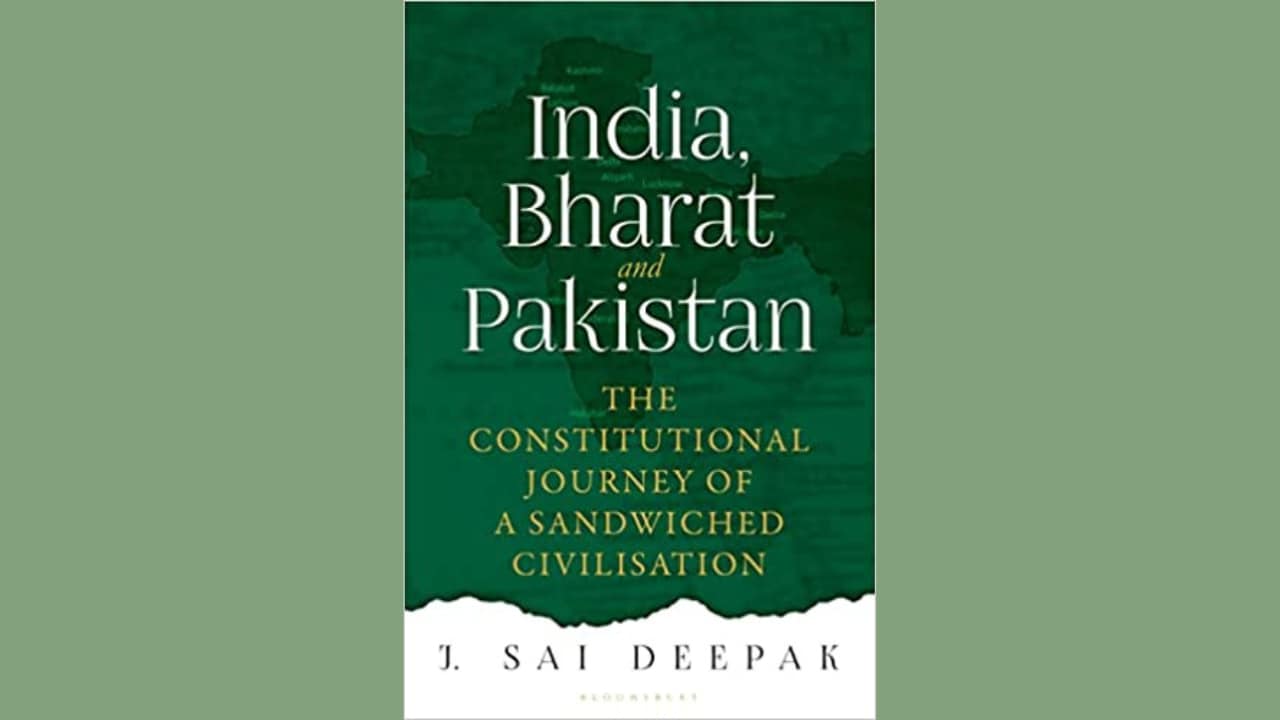We are increasingly living in a world where all of history may seem like interpretation. The extent to which this interpretation may be closest to the truth, depends on the sources that a historian draws from, the tonality of the sources and the biases contained within those sources. Eventually, a collective consciousness emerges, when a narrative is agreed upon by a large number of people.
J Sai Deepak, our author is a litigator who delivers lectures on constitutional issues. His style of presenting an idea by bringing various arguments together- and looking at it in various ways is very consistent with his craft. And he’s definitely building a strong narrative with his Bharat Trilogy. The book ‘India Bharat and Pakistan-the constitutional journey of a sandwiched civilization’ is the second book in his trilogy. The appendix and the references stretch over 80 pages, which is natural for an endeavour like this. Here’s what stood out for me-
1. J Sai Deepak is not afraid to connect things with each other. Even though this may have been done before, the author does it authoritatively. In one small paragraph on page 9, the author talks about how despite Babur’s victory in the first battle of Panipat in 1526, the Mughal influence was limited to Delhi- thanks to the Marathas, the Jats, the Sikhs and the English. He also says that it was around the same time- the early 18th century that the Ottoman Empire also saw a general decline, with its inability to keep pace with the Habsburg and Russian Empires becoming more evident. This conjures up quite a view.
2. There is a picture and detailed narration of the mass meeting of Muslims in Dacca on 5th September 1906 in favour of the partition of Bengal. The author discusses the origins of the two-nation theory and takes an authoritative position that the idea of Hindu-Muslim separateness was not sudden or a knee jerk disillusionment with the Indian National Congress founded in 1885, but much deeper than that. There is an arresting cartoon from the magazine Hindi Punch in 1906 which talks about vandalism and refers to the separation of Bengal partition of Bengal by chatting about the layers of history that influenced it.
3. Those who have read the first book – India That is Bharat will know that it covers the period from 1492 to 1919.The second one covers the period 1740-1924. Since it covers a smaller period perhaps; the second book is very intense in terms of connecting the dots and perhaps he even indulges the reader a little more. More importantly, the author has openly said, “my book is not original.” He does the job of the lawyer, which is to bring everything together with a macro perspective.
4. Is Mahatma Gandhi blamed unduly for the Khilafat movement? This is an interesting discussion within the book and the author asks you to re-evaluate your heroes and your villains.
5. The narration about the Moplah Hindu genocide stands out – J Sai Deepak actually transitions from calling it a riot to an outrage – he insists that there was no parity to it and the barbarity was one-sided.
The stories of partition have always been emotional for India. Few authors delve into the ideology of partition as dispassionately as J Sai Deepak does. Or examine what Bharat has been through and what India really is, for that matter . He blames us, quite rightly, for having short lived memories and fantastic amnesia about events in our recent past.
The question that faces the reader therefore is, is this the narrative that will shape your mind?
Reeta Ramamurthy Gupta is a columnist and bestselling biographer. She is credited with the internationally acclaimed Red Dot Experiment, a decadal six-nation study on how ‘culture impacts communication.’ On Twitter @OfficialReetaRG.
